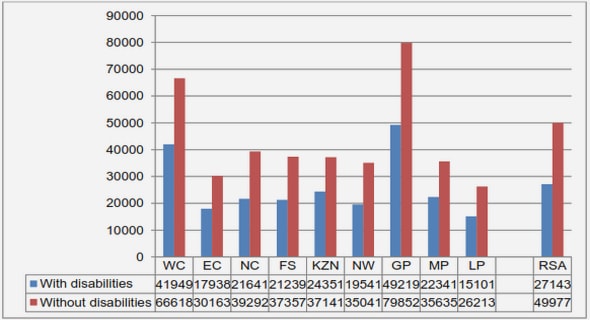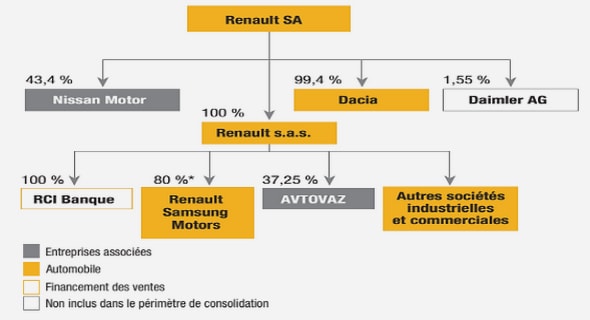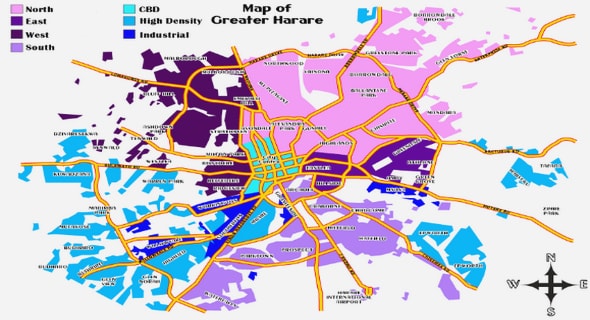Get Complete Project Material File(s) Now! »
Complete and elementary symmetric functions
Commutators in semicircular systems
Symmetric functions and Macdonald polynomials
Table of contents :
Introduction
I Cylindric Plane Partitions
1 Partitions
1.1 Integer Partitions
1.1.1 Inversions
1.1.2 Arms, legs and hooks
1.1.3 Partial orders
1.1.4 Horizontal and vertical strips
1.2 Plane partitions
1.2.1 Regular plane partitions
1.2.2 Reverse plane partitions
1.3 Cylindric Plane Partitions
1.3.1 Definition
1.3.2 Cylindric diagrams
1.3.3 Cylindric inversion coordinates
1.3.4 Cylindric hook length
1.3.5 Arbitrarily labelled cylindric diagrams
1.3.6 Rotation operator
2 Correspondences
2.1 Robinson correspondence
2.1.1 Standard Young Tableau
2.1.2 Viennot’s shadow method
2.1.3 Reverse Viennot shadow method
2.1.4 Fomin growth diagrams
2.1.5 Skew standard tableau
2.1.6 Fomin’s local rules
2.1.7 Skew Robinson correspondence
2.1.8 Fomin’s reverse local rules
2.2 RSK and Burge correspondences
2.2.1 Semi-standard tableau
2.2.2 Horizontal and vertical strips
2.2.3 Block permutation matrices
2.2.4 Growth diagram patches
2.2.5 Reverse algorithm (RSK)
2.2.6 Forward algorithm (RSK)
2.2.7 Forward algorithm (Burge)
2.2.8 Reverse algorithm (Burge)
2.2.9 Local rules
2.2.10 Burge local rule
3 Symmetric functions and Macdonald polynomials
3.1 Symmetric functions
3.1.1 Compositions
3.1.2 Multivariable polynomials
3.1.3 Monomial symmetric functions
3.1.4 Infinitely many variables
3.2 Plethystic notation
3.2.1 Alphabets
3.2.2 Complete and elementary symmetric functions
3.2.3 Hall inner production
3.3 Schur functions
3.3.1 Definition in terms of semistandard Young tableau
3.3.2 Cauchy identity and RSK
3.3.3 Pieri rules
3.4 Local rules
3.4.1 Alternative proof of Cauchy identity
3.4.2 Commutation Relations
3.5 Robinson correspondence revisited
3.5.1 Representation Theory
3.5.2 Newton power sums
3.5.3 Algebraic proof of Robinson correspondence
3.5.4 Canonical commutation relations
3.6 Macdonald Polynomials
3.6.1 Plethystic notation
3.6.2 (q, t)-Pieri operators
3.6.3 Definition
3.6.4 Hall–Littlewood polynomials
4 Bijective proof of Borodin’s identity
4.1 Symmetric function proof of Borodin’s identity
4.1.1 Notation
4.1.2 Algebraic interpretation of cylindric plane partition
4.1.3 Some lemmas
4.1.4 The proof
4.2 Local rule as higher order function
4.2.1 Combinatorial formulation
4.2.2 Definition of local rule
4.3 The bijection
4.3.1 Idea of bijection
4.3.2 Cylindric growth diagrams
4.3.3 The bijection
4.3.4 Remarks
4.4 The weight
4.4.1 Alternative definition of weight
4.4.2 Proof that the bijection is strongly weight preserving
4.5 Conclusion
5 Macdonald polynomial analog
5.1 (q, t)-Borodin identity
5.1.1 Statement
5.1.2 Proof
5.2 The Macdonald weight
5.2.1 Lattice paths on the cylinder
5.2.2 Cubes in lattice path picture
5.2.3 Hall–Littlewood case
5.2.4 Bijection
5.3 Proof of Theorem 12.2.1
5.3.1 Plethystic notation
5.3.2 Regrouping terms
5.3.3 Cancellations
5.3.4 Switching models
5.4 Conclusion
II Lambda determinants
6 Lambda determinants
6.1 Permutations
6.1.1 Inversions and dual inversions
6.1.2 Determinants
6.1.3 Posets and lattices
6.1.4 Bruhat order
6.1.5 Monotone triangles
6.2 Alternating Sign matrices
6.2.1 Inversions and dual inversions
6.2.2 Monotone triangles
6.2.3 Completion of Bruhat order
6.2.4 Lambda determinant
6.3 Interlacing matrices
6.3.1 Left corner sum matrices
6.3.2 Left interlacing matrices
6.3.3 Inversions
6.3.4 Domino tiling of Aztec diamond
6.4 Duality
6.4.1 Right corner sum matrices
6.4.2 Right interlacing matrices
6.4.3 Duality between left and right interlacing pairs
6.5 Main Theorem
6.5.1 Notation
6.5.2 Statement of theorem
6.5.3 Proof of Theorem 13.5.1
6.5.4 Special case
6.6 Conclusion
III Commutants in semicircular systems
7 Commutators in semicircular systems
7.1 Hilbert spaces
7.2 Chebyschev polynomials
7.3 Semicircular Systems
7.4 Main result
7.4.1 Statement
7.4.2 Topological considerations
7.4.3 Commutators
7.4.4 Projection formula
7.4.5 An interesting matrix
7.5 Conclusion
8 Partitions
8.1 Integer Partitions
8.1.1 Inversions
8.1.2 Arms, legs and hooks
8.1.3 Partial orders
8.1.4 Horizontal and vertical strips
8.2 Plane partitions
8.2.1 Regular plane partitions
8.2.2 Reverse plane partitions
8.3 Cylindric Plane Partitions
8.3.1 Definition
8.3.2 Cylindric diagrams
8.3.3 Cylindric inversion coordinates
8.3.4 Cylindric hook length
8.3.5 Arbitrarily labelled cylindric diagrams
8.3.6 Rotation operator
9 Correspondences
9.1 Robinson correspondence
9.1.1 Standard Young Tableau
9.1.2 Viennot’s shadow method
9.1.3 Reverse Viennot shadow method
9.1.4 Fomin growth diagrams
9.1.5 Skew standard tableau
9.1.6 Fomin’s local rules
9.1.7 Skew Robinson correspondence
9.1.8 Fomin’s reverse local rules
9.2 RSK and Burge correspondences
9.2.1 Semi-standard tableau
9.2.2 Horizontal and vertical strips
9.2.3 Block permutation matrices
9.2.4 Growth diagram patches
9.2.5 Reverse algorithm (RSK)
9.2.6 Forward algorithm (RSK)
9.2.7 Forward algorithm (Burge)
9.2.8 Reverse algorithm (Burge)
9.2.9 Local rules
9.2.10 Burge local rule
10 Symmetric functions and Macdonald polynomials
10.1 Symmetric functions
10.1.1 Compositions
10.1.2 Multivariable polynomials
10.1.3 Monomial symmetric functions
10.1.4 Infinitely many variables
10.2 Plethystic notation
10.2.1 Alphabets
10.2.2 Complete and elementary symmetric functions
10.2.3 Hall inner production
10.3 Schur functions
10.3.1 Definition in terms of semistandard Young tableau
10.3.2 Cauchy identity and RSK
10.3.3 Pieri rules
10.4 Local rules
10.4.1 Alternative proof of Cauchy identity
10.4.2 Commutation Relations
10.5 Robinson correspondence revisited
10.5.1 Representation Theory
10.5.2 Newton power sums
10.5.3 Algebraic proof of Robinson correspondence
10.5.4 Canonical commutation relations
10.6 Macdonald Polynomials
10.6.1 Plethystic notation
10.6.2 (q, t)-Pieri operators
10.6.3 Definition
10.6.4 Hall–Littlewood polynomials
11 Bijective proof of Borodin’s identity
11.1 Symmetric function proof of Borodin’s identity
11.1.1 Notation
11.1.2 Algebraic interpretation of cylindric plane partition
11.1.3 Some lemmas
11.1.4 The proof
11.2 Local rule as higher order function
11.2.1 Combinatorial formulation
11.2.2 Definition of local rule
11.3 The bijection
11.3.1 Idea of bijection
11.3.2 Cylindric growth diagrams
11.3.3 The bijection
11.3.4 Remarks
11.4 The weight
11.4.1 Alternative definition of weight
11.4.2 Proof that the bijection is strongly weight preserving
11.5 Conclusion
12 Macdonald polynomial analog
12.1 (q, t)-Borodin identity
12.1.1 Statement
12.1.2 Proof
12.2 The Macdonald weight
12.2.1 Lattice paths on the cylinder
12.2.2 Cubes in lattice path picture
12.2.3 Hall–Littlewood case
12.2.4 Bijection
12.3 Proof of Theorem 12.2.1
12.3.1 Plethystic notation
12.3.2 Regrouping terms
12.3.3 Cancellations
12.3.4 Switching models
12.4 Conclusion
13 Lambda determinants
13.1 Permutations
13.1.1 Inversions and dual inversions
13.1.2 Determinants
13.1.3 Posets and lattices
13.1.4 Bruhat order
13.1.5 Monotone triangles
13.2 Alternating Sign matrices
13.2.1 Inversions and dual inversions
13.2.2 Monotone triangles
13.2.3 Completion of Bruhat order
13.2.4 Lambda determinant
13.3 Interlacing matrices
13.3.1 Left corner sum matrices
13.3.2 Left interlacing matrices
13.3.3 Inversions
13.3.4 Domino tiling of Aztec diamond
13.4 Duality
13.4.1 Right corner sum matrices
13.4.2 Right interlacing matrices
13.4.3 Duality between left and right interlacing pairs
13.5 Main Theorem
13.5.1 Notation
13.5.2 Statement of theorem
13.5.3 Proof of Theorem 13.5.1
13.5.4 Special case
13.6 Conclusion
14 Commutators in semicircular systems
14.1 Hilbert spaces
14.2 Chebyschev polynomials
14.3 Semicircular Systems
14.4 Main result
14.4.1 Statement
14.4.2 Topological considerations
14.4.3 Commutators
14.4.4 Projection formula
14.4.5 An interesting matrix
14.5 Conclusion
Bibliography


